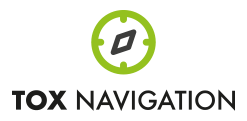NAMs - Use and application of QSAR and read-across
-
Author & tutor:
Dr. Elena Fioravanzo -
For:
toxicologists, chemists, post-graduate students and regulatory officers -
Study time:
16 hours + homework -
Homework:
11 quizzes and 18 home assignments using software
Write your awesome label here.
Here is what we will cover in
this course
Recognised by EUROTOX for 16 hours of Continued Professional Development (CPD) for ERT accredited toxicologists
Session
1:
Toxicology Data Resources
Chemical
identifiers
Toxicology Data Resources
Learning outcome
At the end of this session you should be able to:
Toxicology Data Resources
Learning outcome
At the end of this session you should be able to:
- understand and use the most common chemical identifiers to ensure accuracy of chemical structures
- have some basic practical skills in using selected tools to find relevant toxicological data
Session
2:
Molecular descriptors & structural similarity
Most
common molecular descriptors
Structural
similarity
Learning outcome
At the end of this session you should be able to:
At the end of this session you should be able to:
- understand and use the most common molecular descriptors and their use
- have some basic practical skills in using selected tools to obtain or calculate molecular descriptors and to evaluate the structural similarity between two chemical structures
Session
3:
(Q)SAR models
Rule and statistical-based
models
Combination to reduce uncertainty
Free QSAR software for regulatory toxicology
Combination to reduce uncertainty
Free QSAR software for regulatory toxicology
Learning outcome
At
the end of this session you should be able to:
- understand concepts and principles of rule-based and statistical-based (Q)SAR models and which are the pros and cons of the different methodologies
- have some basic practical skills in using selected tools to obtain predicted toxicological properties
Session
4:
Interpretation of (Q)SAR
Introduction to the main guidelines on how to use and report (Q)SARs
The selection of (Q)SAR models best suited for regulatory toxicology
How to report (Q)SAR for regulatory toxicology
The correct interpretation of (Q)SAR predictions and the description of the associated uncertainty
The selection of (Q)SAR models best suited for regulatory toxicology
How to report (Q)SAR for regulatory toxicology
The correct interpretation of (Q)SAR predictions and the description of the associated uncertainty
Learning outcome
At the end of this session you should be able to:
At the end of this session you should be able to:
- reflect on the strengths and limitations of rule-based and statistical-based (Q)SAR models and their proper areas of use
- understand concepts and principles of the validation of (Q)SAR models
- have some basic practical skills in interpretation of (Q)SAR predictions and in reporting (Q)SAR for regulatory toxicology
Session
5:
Read-across approach
The
read-across concept
Frameworks for read-across
Forming rational groups of chemicals: how to find suitable analogues
Freely available read-across software
Learning outcome
At the end of this session you should be able to:
Frameworks for read-across
Forming rational groups of chemicals: how to find suitable analogues
Freely available read-across software
Learning outcome
At the end of this session you should be able to:
- understand concepts and principles of read-across and the strategies to identify analogues
- have some basic practical skills in using the OECD QSAR ToolBox to obtain toxicological properties predicted with a read-across approach
Software demonstrated on the course:
All software packages are non-commercial and free to install and use
- OECD QSAR Toolbox
- EPA Computox Dashboard
- Danish (Q)SAR Models
- Danish (Q)SAR Database
- COSMOS NG
- Integrated Chemical Environment (ICE)
- VEGA
- Janus
- OPERA
- T.E.S.T.
- ChemSpider
What can you expect?
Click the monitor on the left to watch a short video giving an overview on how the eLearning application works.
The courses are tutor-assisted. There are one-to-one video sessions with the tutor and at any time you can email us with your questions or post any queries on our Community forum.
The courses are tutor-assisted. There are one-to-one video sessions with the tutor and at any time you can email us with your questions or post any queries on our Community forum.
Write your awesome label here.
Professional training
NAMs eLearning course
Really good course, very well constructed with good balance between theory and practical examples. The e-learning platform is well structured and very easy to navigate in. Elena and Peter have always answered to our questions promptly and in a friendly way. Elena have a great amount of knowledge in the field and is passionate. Training highly recommended.
Blandine Doornaert,
Regulatory Toxicologist, Solvay
NAMs eLearning Course (QSAR and Read Across)
Great course, very insightful, providing a solid foundation of knowledge. I have learnt a lot on both the theory and application of (Q)SARs and read across. The course was easy to navigate and well presented, with a good interactive interface. The exercises throughout were helpful to test my knowledge and application of different tools. Elena and Peter were very helpful and contactable throughout. Elena has a great amount of knowledge in the field and answered any questions I had to a very high standard within helpful 1-to-1 meetings arranged within the course. Would highly recommend!
Mesha Williams,
Computational Scientist, Unilever
"I highly recommend these courses, they are really well taught and I've gained some really useful insights and key knowledge needs in these areas"
Jason Manton, Principal Toxicologist, Penman Consulting
"Fantastic course. Very clear, concise and practical teaching. Would thoroughly recommend for those who are new to QSAR/read-across, or require a 'knowledge top-up'. They are among the top in their field."
Giles Hayward, Toxicologist, Lubrizol
Dr Elena Fioravanzo has 30 years experience in cheminformatics and the Managing Director of ToxNavigation - a consultancy utilising the latest methods of computational toxicology to facilitate the chemical risk assessment process. Elena has presented at many international conferences and has currently 36 papers and 85 posters published.
Managing Director
Peter Russell has over 25 years experience in configuring, demonstrating and training scientists in the use of cheminformatics software and database systems.
Program Director


